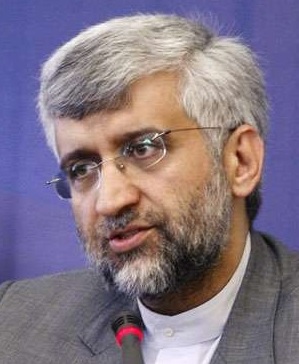Interview with Michael Adler by Garrett Nada
What was the outcome of the talks in Kazakhstan and why?
The talks were basically a failure because the six world powers did not receive an answer to the proposal they made to Iran in February. In those talks, also in Kazakhstan, the United States, China, France, Germany, Russia and the United Kingdom ― the so-called P5+1 ― had presented a compromise formula to move negotiations forward. It included:

•Iran would suspend all 20 percent enrichment of uranium, including enrichment at the Fordo facility near the northern city of Qom. Fordo is a heavily reinforced site that could be impregnable to air attack.
•The international community would lift some punitive restrictions, allowing Tehran to trade gold and other currencies, which would help Iran get around sanctions on its banking sector.
But at the April 5-6 talks, Iran instead countered with an offer based on a proposal it had put forward in Moscow last June. The specific new plan was not released but Tehran’s proposal in June included:
•Stage 1: The P5+1 would recognize Iran’s right to enrich uranium. In return, Iran would
emphasize its commitments under the Non-proliferation Treaty and its opposition to nuclear
weapons.
•Stage 2: The P5+1 would lift unilateral and multilateral sanctions on Iran outside of U.N.
Security Council resolutions. In return, Iran would continue to cooperate with the U.N.
nuclear watchdog and answer questions about possible military dimensions of its program.
•Stage 3: U.N. sanctions would be lifted, and Iran’s nuclear file would be removed from the
Security Council’s agenda. In return, Iran would cooperate with the P5+1 to provide
enriched fuel for the Tehran Research Reactor.
•Stage 4: The parties would cooperate in designing and building nuclear power plants and
light water research reactors in Iran.
•Stage 5: The parties would start cooperating on regional issues that could include Syria,
narcotics and piracy.
How was this new round different from the earlier rounds of diplomacy?
The first day of the talks on April 5 was a disaster. Iran presented its own offer instead of a response to the February proposal. It basically reiterated its offer from the Moscow talks in June 2012. But the P5+1 powers had already rejected that 2012 proposal. A senior U.S. diplomat said that Iran was maximizing demands and only proposing minimal action on its part.
The second day of negotiations was not much more productive. Diplomats discussed the same issues, although some said Iran engaged in discussions more seriously than in the past. Instead of repeating rhetoric or prepared speeches, Iranian negotiators reportedly spoke about specific items during question-and-answer sessions. Some diplomats felt this directness was new and even a sign of serious engagement, although they may have been grasping at straws to find a productive outcome.
What does the outcome mean?
The outcome means that the process is likely to continue. Negotiations are by nature slow, tortuous and full of setbacks, a U.S. official said. “There may not have been a breakthrough, but there also was not a breakdown,” the official said.
What happens next? What are the prospects for another round of talks?
No date has been set for another round of talks. But a diplomat close to the negotiations said that another session may happen soon. On the other hand, most analysts do not expect to see progress until after Iran’s June presidential election.
What are the major gaps in the two sides’ positions?
The gap between the two sides is philosophical as well as substantial. The major gap is on the issue of suspension of uranium enrichment, which has always been the key goal of P5+1 countries. The world’s six major powers want Iran to suspend 20 percent enrichment as a confidence-building gesture to clear the way for more substantial negotiations on long-term issues―namely concern about enrichment and possible military dimensions of Iran’s nuclear program.
From the beginning, Iran has demanded that the international community recognize its right to enrichment, which already provides fuel for the Tehran Research Reactor and could provide fuel if Iran were to build a bomb. Tehran also does not want to be singled out or placed under any special scrutiny by the U.N. nuclear watchdog or the U.N. Security Council.
The priorities of the international community and Iran have barely changed over the last decade. The important difference is that Iran was originally enriching to 3.5 percent. Since 2010, it has been enriching to 20 percent. This causes added concern since weapon-grade uranium, enriched to more than 90 percent, is easier to produce from 20 percent enriched uranium than from 3.5 percent enriched uranium.
Michael Adler, a public policy scholar at the Woodrow Wilson International Center for Scholars, formerly covered the International Atomic Energy Agency for Agence France-Presse.
Photo credit: Saeed Jalili (Iran’s chief nuclear negotiator) by Parmida76 on Flickr
Online news media are welcome to republish original blog postings from this website in full, with a citation and link back to The Iran Primer website (www.iranprimer.com) as the original source. Any edits must be authorized by the author. Permission to reprint excerpts from The Iran Primer book should be directed to permissions@usip.org
